PCIe 7.0 to Reach 512 GB/s, Arriving in 2025
Moar bandwidth!
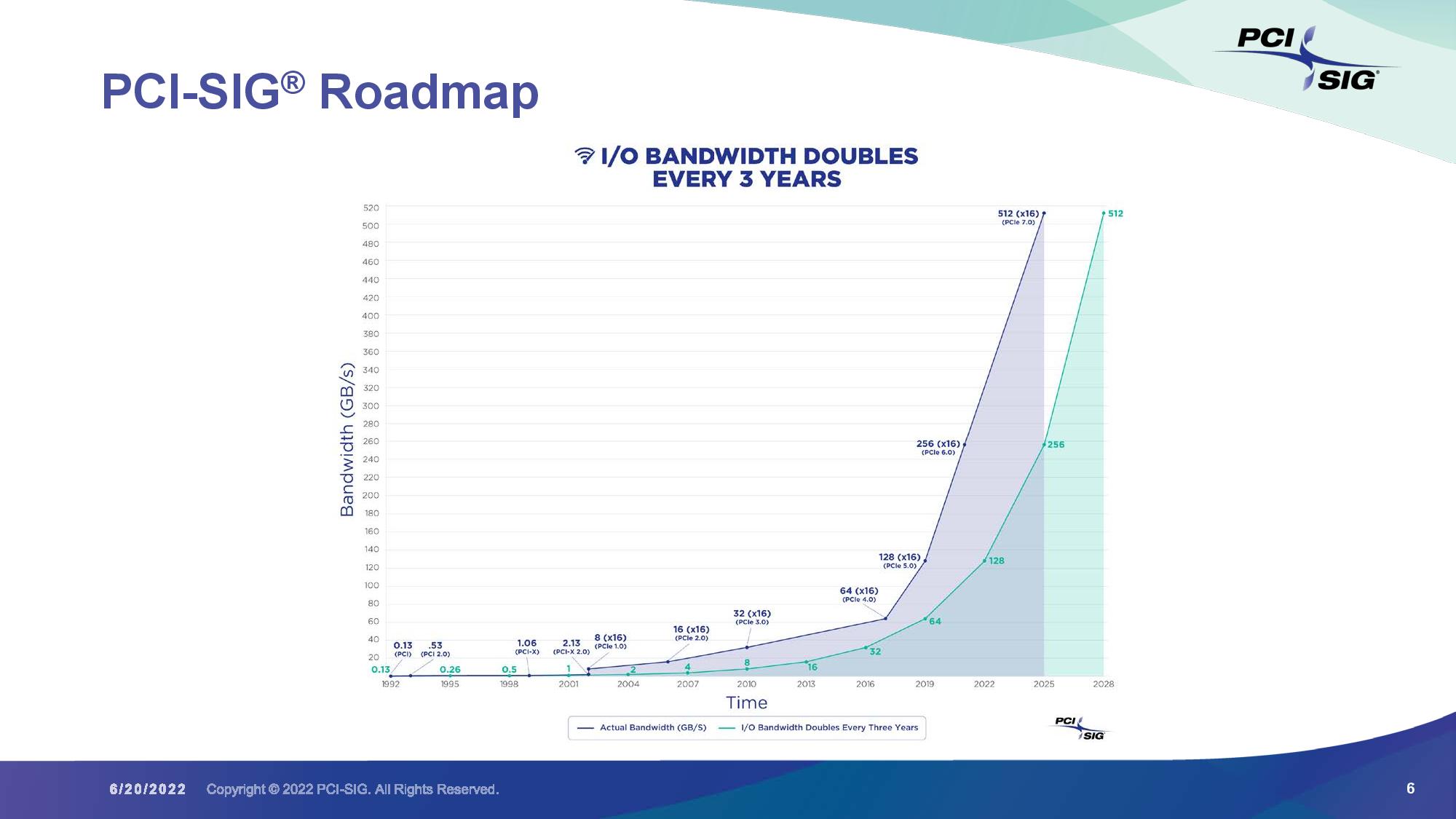
The PCI-SIG Developers Conference 2022 is in full swing, and today the standards committee behind the ubiquitous PCIe interface announced that the PCIe 7.0 specification is targeted for release to its members in 2025 with a data rate up to 128 GT/s. That equates to 512 GB/s of bi-directional throughput via a 16-lane (x16) connection, before encoding overhead. As a reminder, the PCI-SIG is the consortium behind the PCIe interface, an open industry standard comprised of over 900 member companies.
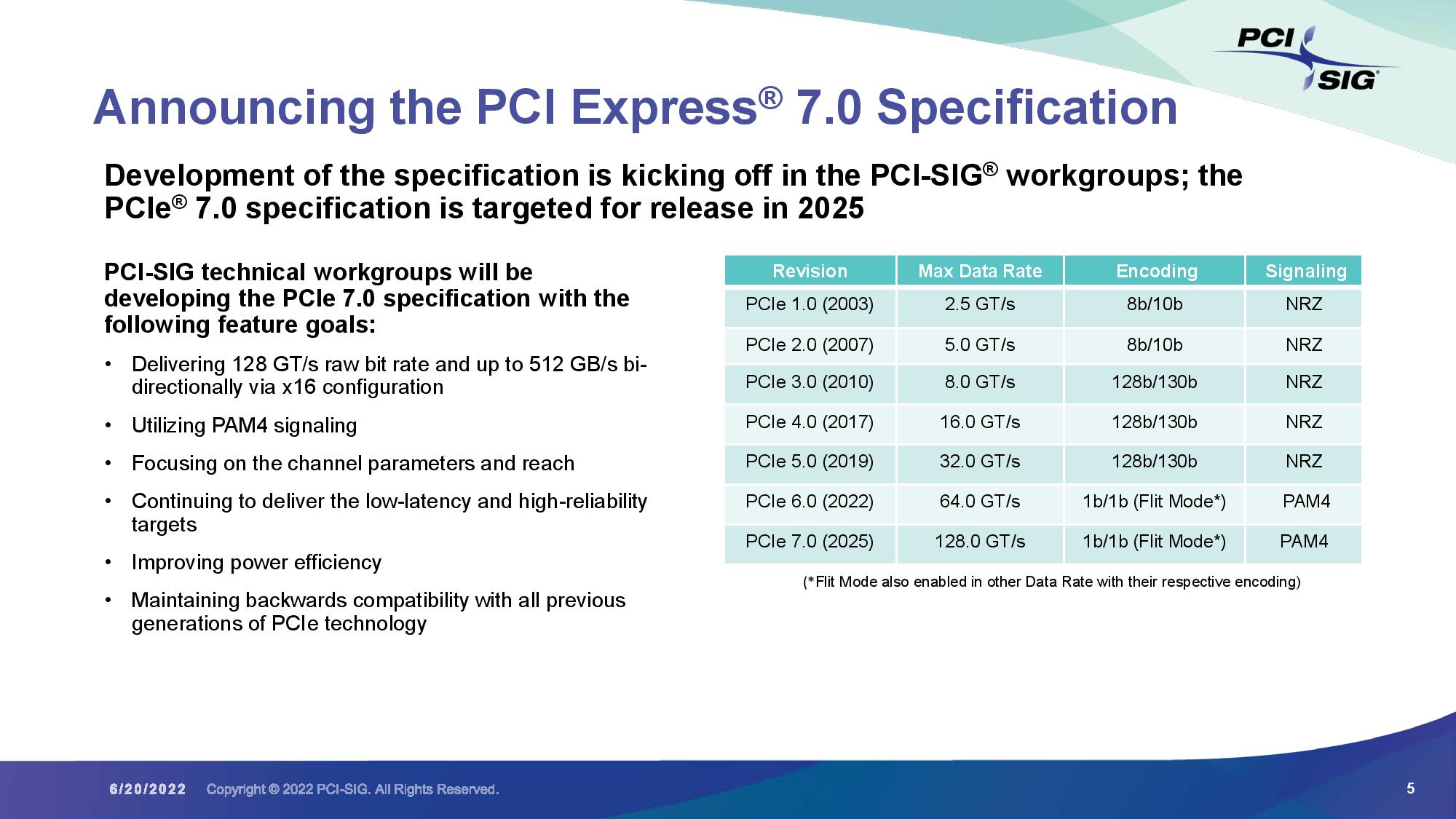
The PCI-SIG notes that the PCIe 7.0 interface will provide a blistering 512 GB/s of bi-directional throughput over a x16 connection, but that is before encoding overhead and the impact of header efficiency, both of which affect the usable bandwidth.
The PCIe 7.0 interface will continue to use 1b/1b flit mode encoding and the PAM4 signaling tech introduced with PCIe 6.0, a notable improvement over the 128b/130b encoding and NRZ signaling used with the 3.0 to 5.0 specifications. As such, the real-world usable bandwidth will be somewhat lower than the 512 GB/s figure but still represent a doubling over the PCIe 6.0 interface.
As we saw with the jump to PCIe 4.0 and 5.0, the length of PCIe traces will again shorten due to the faster signaling rates. This means the minimum allowable distance without additional componentry between the PCIe root device, like a CPU, and the end device, like a GPU, will shorten. As a result, motherboards will need more retimers and thicker PCBs comprised of higher-quality materials than we saw with prior generations of the interface. This means that PCIe 7.0 support will result in yet another hike in motherboard pricing.
Notably, the higher bandwidth per lane, now at 32 GB/s bi-directional for a x1 connection, could allow for 'thinner' connections for some devices (like using a x4 instead of a x8 connection, for instance).

The groundwork for the PCIe 7.0 specification comes after PCI-SIG finalized the PCIe 6.0 specification earlier this year. PCIe 6.0 devices began coming to market in April from Renesas. However, it will still be some time before we see devices like SSDs and GPUs that support this speedy interface — these specifications are typically ratified and finalized long before we see shipping silicon.
As you'll notice, there still aren't many PCIe 5.0 devices on the market yet, either, though the interface did come to mainstream motherboards with Intel's Alder Lake and will also make an appearance on AMD's upcoming Zen 4 Ryzen 7000 platform that arrives later this year. The first PCIe 5.0 SSDs will arrive at the same time as the Ryzen 7000 processors, but we've already seen product announcements for PCIe 5.0 devices for data centers and AI/ML gear.
In other words, you won't see PCIe 7.0 devices on the market for quite some time, though the PCI-SIG is starting to define the specification now and hopes to meet its goal of delivering a new spec every three years. The PCIe 7.0 spec is expected to land in 2025, but we won't see end devices until about 18 months after the spec is finalized.
- PCIe 7.0 Specification Goals:
- Delivering 128 GT/s raw bit rate and up to 512 GB/s bi-directionally via x16 configuration
- Utilizing PAM4 (Pulse Amplitude Modulation with 4 levels) signaling
- Focusing on the channel parameters and reach
- Continuing to deliver low-latency and high-reliability targets
- Improving power efficiency
- Maintaining backwards compatibility with all previous generations of PCIe technology







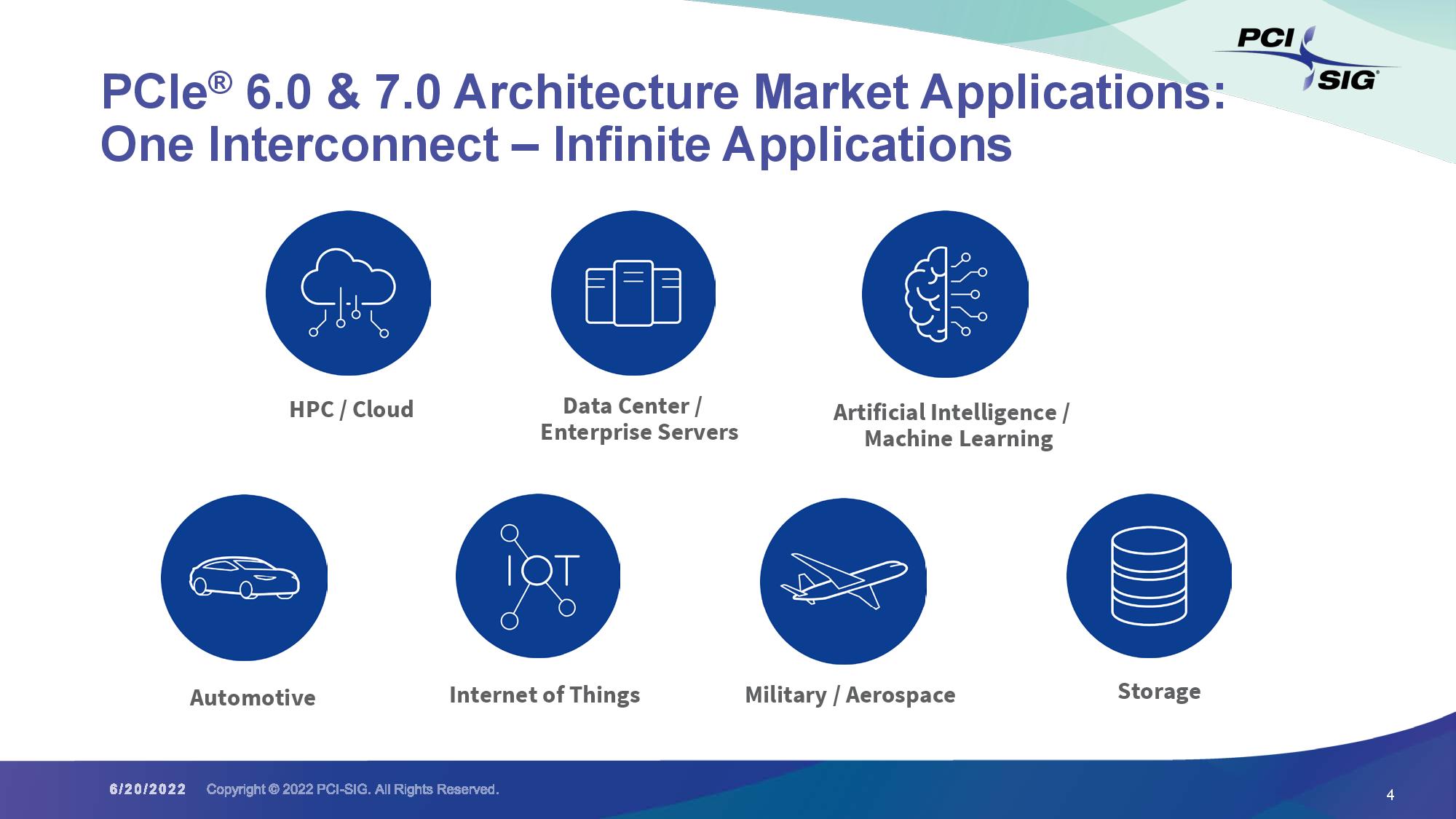






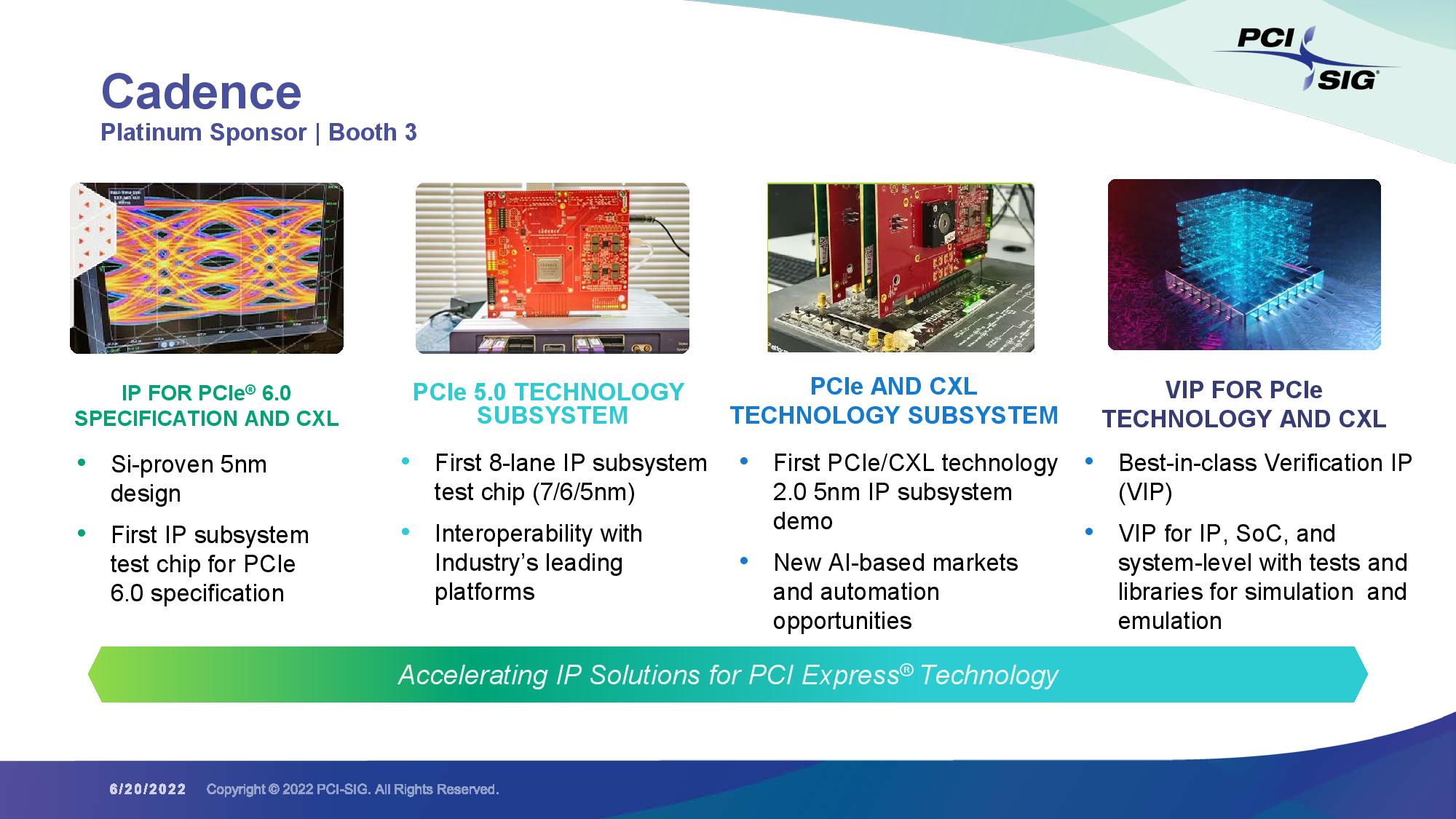


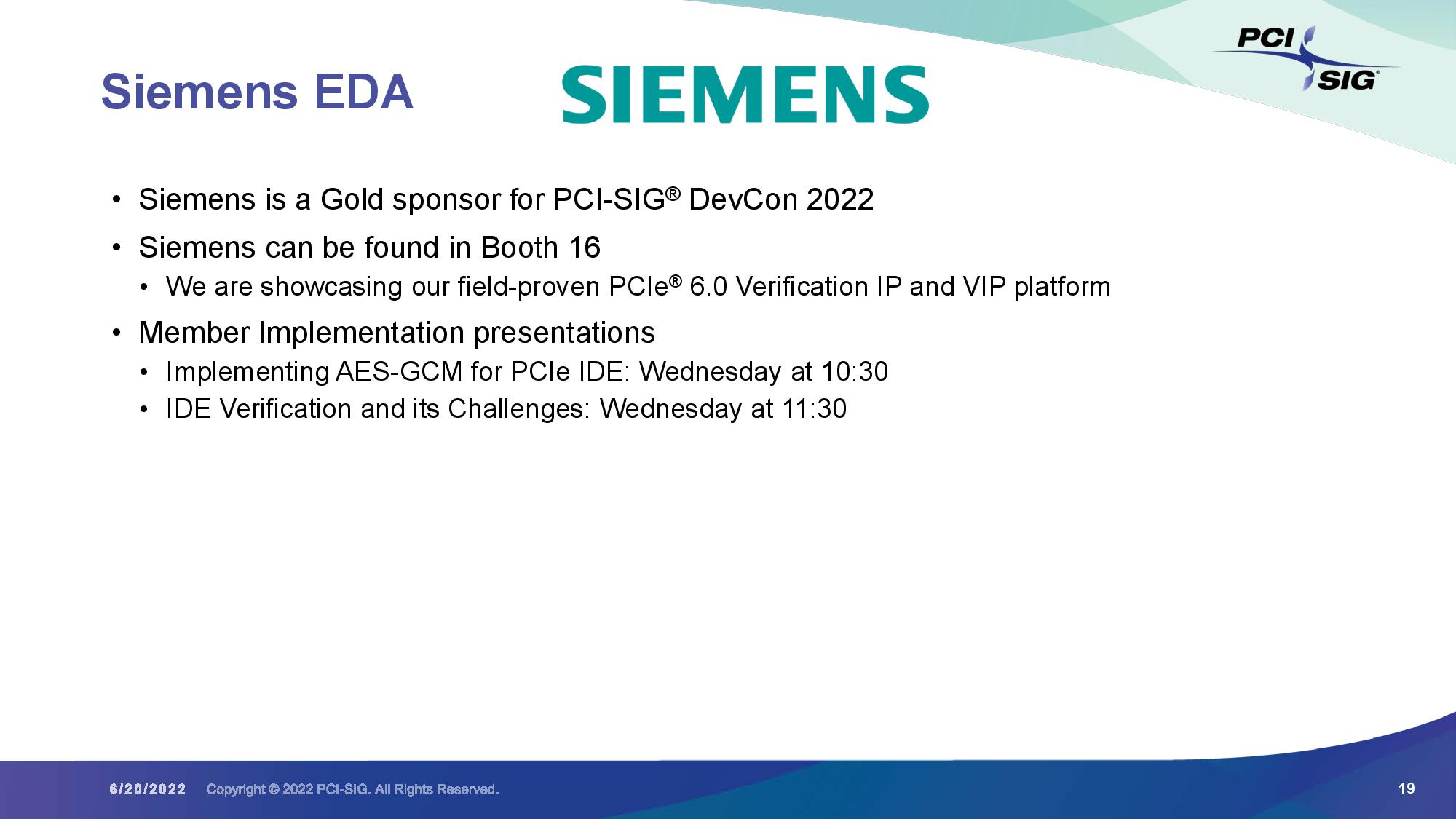

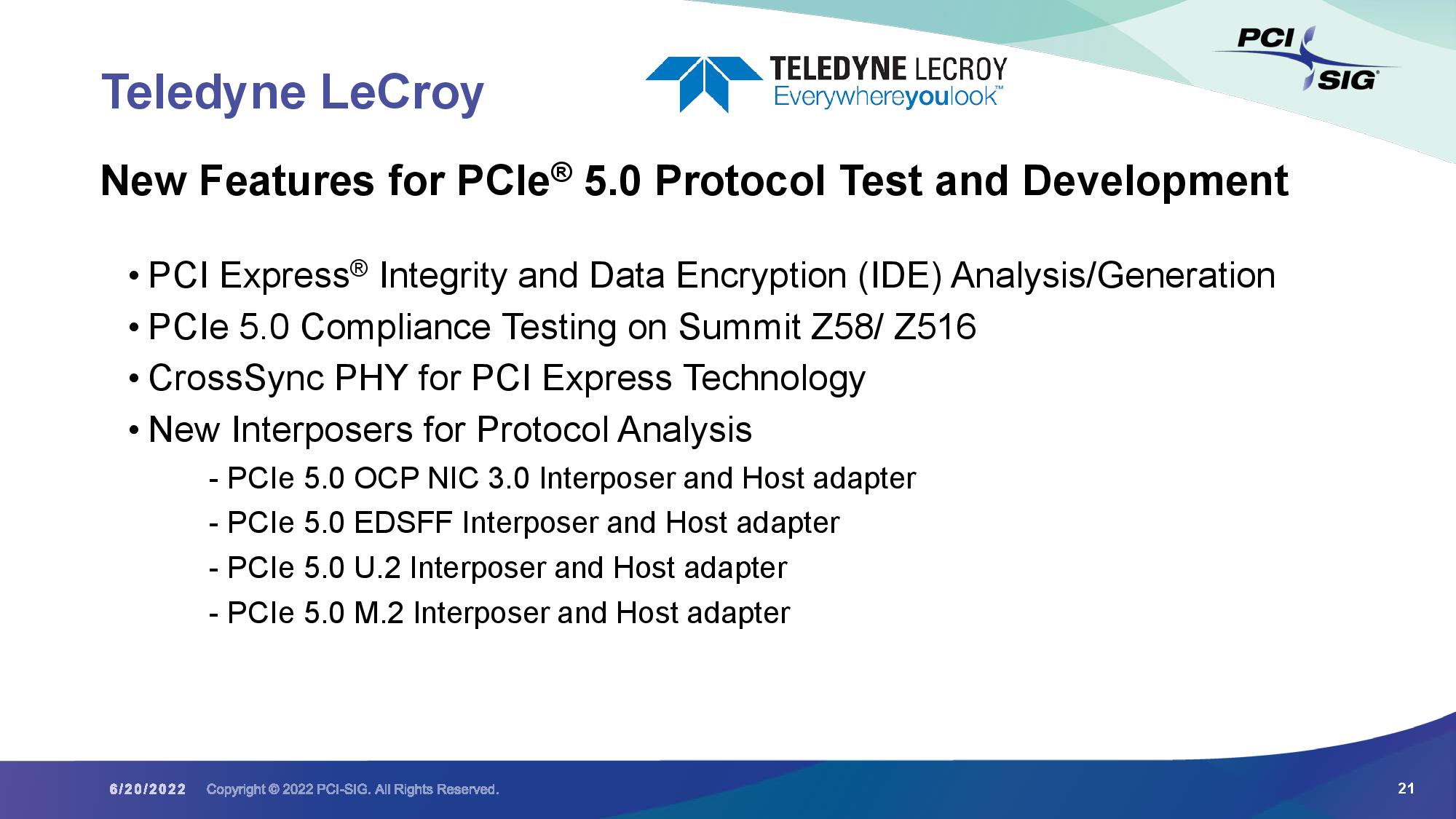
The PCI-SIG hasn't shared many of the details of the interface yet, but we're sure to learn more as it works its way through the definition phase. In the meantime, here's the full press deck for your perusal.
Get Tom's Hardware's best news and in-depth reviews, straight to your inbox.

Paul Alcorn is the Editor-in-Chief for Tom's Hardware US. He also writes news and reviews on CPUs, storage, and enterprise hardware.
-
KananX It’s very interesting how much time PCIE 4.0 took in comparison with all the other versions, I’m curious why. Suffice to say, 4.0 is still pretty good for gamers, only upcoming GPUs will really need it to work at full speeds and only upcoming games could need PCIE 4.0 NVME drives, to run at highest loading speed involving DirectStorage.Reply -
InvalidError Reply
It is very simple: even the server space had limited use for anything faster than 3.0 until SSDs came along. Now that SSDs are getting bigger and faster, effectively eliminating the biggest bottleneck, the server market needs massively more IO bandwidth to optimize the amount of storage and IOPS per system.KananX said:It’s very interesting how much time PCIE 4.0 took in comparison with all the other versions,
It has nothing to do with gaming. Consumers get it simply because it gives AMD, Intel, board manufacturers, etc. one more reason to market the heck out of next-gen stuff and try to jack up prices some more along the way. -
KananX Reply
While the first thing you said makes sense, the second doesn’t, you should consider really reading comments before replying to them, because I made a general comment about what is sufficient for a gamer, not what motivates companies to push for new standards and marketing.InvalidError said:It is very simple: even the server space had limited use for anything faster than 3.0 until SSDs came along. Now that SSDs are getting bigger and faster, effectively eliminating the biggest bottleneck, the server market needs massively more IO bandwidth to optimize the amount of storage and IOPS per system.
It has nothing to do with gaming. Consumers get it simply because it gives AMD, Intel, board manufacturers, etc. one more reason to market the heck out of next-gen stuff and try to jack up prices some more along the way. -
Makaveli ReplyInvalidError said:
It has nothing to do with gaming.
Say it louder for those in the back.
The enterprise market is what drives everything. Consumer products are generally "hand me downs" from that market! -
KananX And saying it has “nothing” to do with gaming is false as well or at least a overstatement. It has to do with gaming to a lesser extent, as gamers profit from it, just later down the row.Reply -
JarredWaltonGPU Reply
Gamers profit very little, relatively speaking, from these faster PCIe speeds. Yes, using a PCIe 4.0 graphics card in a PCIe 4.0 capable system can improve performance a bit, but it's very limited. I did a test a month or two back with RTX 3090 Ti running in Gen4 vs. Gen3 mode on my Alder Lake testbed. The result? 9% faster at 4K, 6% faster at 1440p, 2–4% faster at 1080p. Yes, that's enough to make it useful, but if we were to double that again to PCIe 5.0 speeds I suspect even 4K would only see a 2–3% increase.KananX said:And saying it has “nothing” to do with gaming is false as well or at least a overstatement. It has to do with gaming to a lesser extent, as gamers profit from it, just later down the row.
Incidentally, I also tested with Gen2 speeds. Gen3 was about 6% faster at 1080p, 5% faster at 1440p, and 3% faster at 4K. So there's some margin of error stuff, and I also wasn't sure if changing the speed only affected the PCIe slots or if it was also changing the CPU to chipset speed. Considering PCIe 2.0 hasn't been the standard on PCs for about a decade, that's going pretty far back to only see a 12% increase in performance (from Gen2 to Gen4). -
hotaru.hino Reply
That isn't necessarily a bad thing. It just means enterprise folk get to "beta test" all the latest and greatest first.Makaveli said:The enterprise market is what drives everything. Consumer products are generally "hand me downs" from that market!
And when will that be?KananX said:And saying it has “nothing” to do with gaming is false as well or at least a overstatement. It has to do with gaming to a lesser extent, as gamers profit from it, just later down the row.
I've yet to see a game where PCIe 4.0 absolutely wrecks PCIe 3.0, except amusingly enough, when using AMD's lower end cards. And I've yet to see a game where NVMe SSDs absolutely wreck SATA SSDs.
While you could point out "but DirectStorage!" I doubt it'll have much traction any time soon. -
KananX Reply
I was specifically talking about the near future and also DirectStorage which isn’t a thing now.JarredWaltonGPU said:Gamers profit very little, relatively speaking, from these faster PCIe speeds. Yes, using a PCIe 4.0 graphics card in a PCIe 4.0 capable system can improve performance a bit, but it's very limited. I did a test a month or two back with RTX 3090 Ti running in Gen4 vs. Gen3 mode on my Alder Lake testbed. The result? 9% faster at 4K, 6% faster at 1440p, 2–4% faster at 1080p. Yes, that's enough to make it useful, but if we were to double that again to PCIe 5.0 speeds I suspect even 4K would only see a 2–3% increase.
Incidentally, I also tested with Gen2 speeds. Gen3 was about 6% faster at 1080p, 5% faster at 1440p, and 3% faster at 4K. So there's some margin of error stuff, and I also wasn't sure if changing the speed only affected the PCIe slots or if it was also changing the CPU to chipset speed. Considering PCIe 2.0 hasn't been the standard on PCs for about a decade, that's going pretty far back to only see a 12% increase in performance (from Gen2 to Gen4).
It already happened in a few games, maybe not wracked, but clearly faster. The big evolution will come with games that use DirectStorage, not really earlier. For GPUs you already need 4.0, unless you wanna waste 5% performance on current gen, which doesn’t make any sense if you bought a 3080 or higher. It means you’re someone who is willing to shell out top dollar for performance and not willing to accept losing 5-10% for the weaker bus. This gap will widen with new gens end of year. PCIE 3.0 is fine now, but soon not anymore.hotaru.hino said:And I've yet to see a game where NVMe SSDs -
InvalidError Reply
Or a lot in the RX6500's case.JarredWaltonGPU said:Gamers profit very little, relatively speaking, from these faster PCIe speeds. Yes, using a PCIe 4.0 graphics card in a PCIe 4.0 capable system can improve performance a bit
With 256GB/s of PCIe bandwidth, UMA/tiny-VRAM graphics could climb many rungs up the performance ladder. -
hotaru.hino Reply
I don't see DirectStorage really being a thing anytime soon. Even the current generation of consoles, despite the companies touting their need for fast SSDs, haven't really done anything to show they absolutely need it.KananX said:It already happened in a few games, maybe not wracked, but clearly faster. The big evolution will come with games that use DirectStorage, not really earlier. For GPUs you already need 4.0, unless you wanna waste 5% performance on current gen, which doesn’t make any sense if you bought a 3080 or higher. It means you’re someone who is willing to shell out top dollar for performance and not willing to accept losing 5-10% for the weaker bus. This gap will widen with new gens end of year. PCIE 3.0 is fine now, but soon not anymore.
That's assuming said lower end cards use 16 lanes. AMD seems more than happy to chop off as many as they think they can get away with.InvalidError said:With 256GB/s of PCIe bandwidth, UMA/tiny-VRAM graphics could climb many rungs up the performance ladder.
EDIT: On a side note, I find it amusing on relying on PCIe as a VRAM bus again since this was a thing: https://en.wikipedia.org/wiki/TurboCache